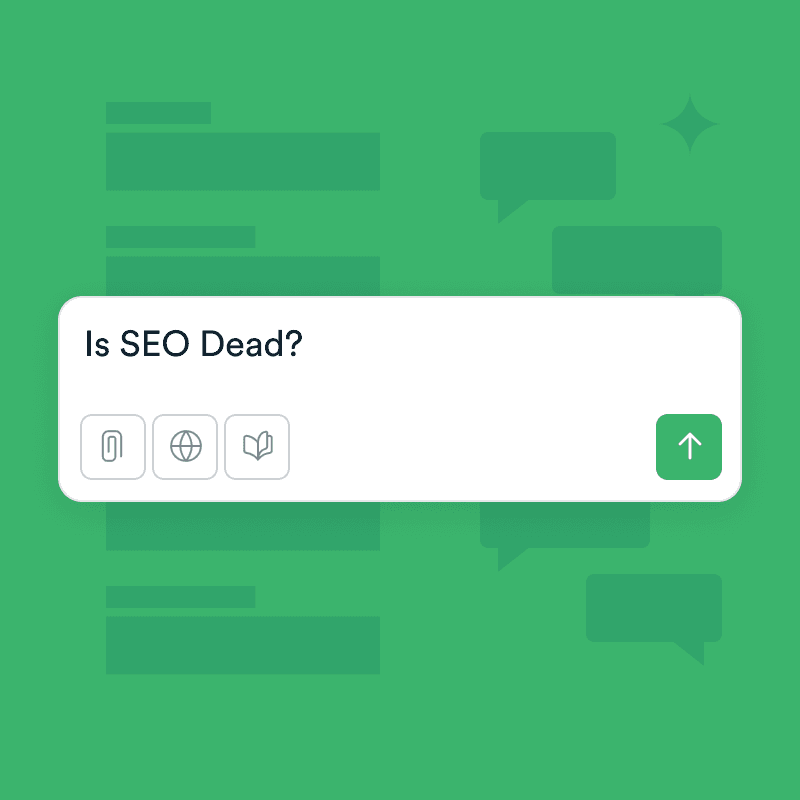The demand for high-quality, personalised content across multiple channels has increased rapidly in recent years. Businesses must create more engaging and tailored experiences for their users across all devices and deliver this content in a performant and scalable way.
Traditional or monolithic content management systems (CMS) often struggle to meet these demands due to their inherent limitations. This is where headless CMS comes in as a solution that provides greater flexibility and the ability to efficiently deliver content across multiple channels, giving designers and developers more freedom to create improved experiences without limitations.
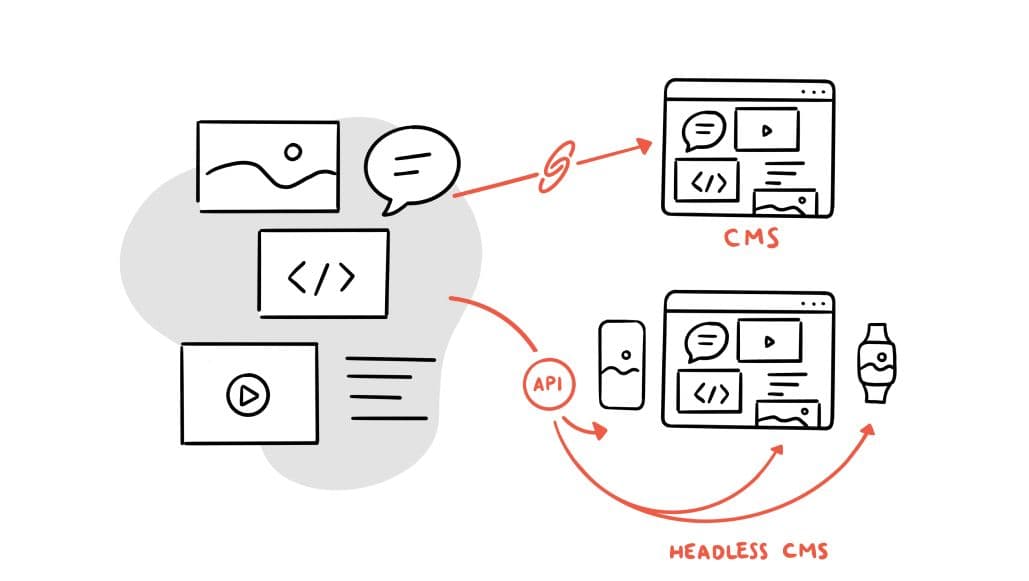
What is a Headless CMS?
Headless CMS is a concept that has attracted a lot of attention recently and is gaining popularity and market share across organisations with more complex content delivery needs. It refers to the separation of the back-end and front-end of a CMS. The back-end, which is responsible for content authoring and delivery, is decoupled from the front-end, which presents content on different digital assets such as websites, mobile apps, kiosks, and more.
When using a headless CMS, the content is stored in a central repository and can be delivered to any digital product via APIs. This separation of responsibilities allows for greater flexibility and agility in providing content across multiple channels.
On the other hand, a traditional CMS is monolithic, meaning the back-end and front-end are tightly coupled. This coupling makes it challenging to serve content to multiple digital assets and limits what can be delivered to the capability of the individual CMS.
Headless is also a fundamental principle of MACH architecture, an industry standard describing modern technology that offers several benefits, including increased agility, speed to market, reduced costs, improved flexibility, better integration capabilities, and enhanced scalability.
Headless represents the H in MACH, which also comprises Microservices, API-first and Cloud-native.
At Inlight, we firmly believe in the advantages of MACH architecture and look to align with these principles when we conceptualise, design and build digital products and experiences for our clients.
To learn more about MACH, visit the MACH Alliance, an industry body that advocates for open and best-of-breed enterprise technology ecosystems.
The diagram below illustrates the differences between a Monolith and MACH architecture.
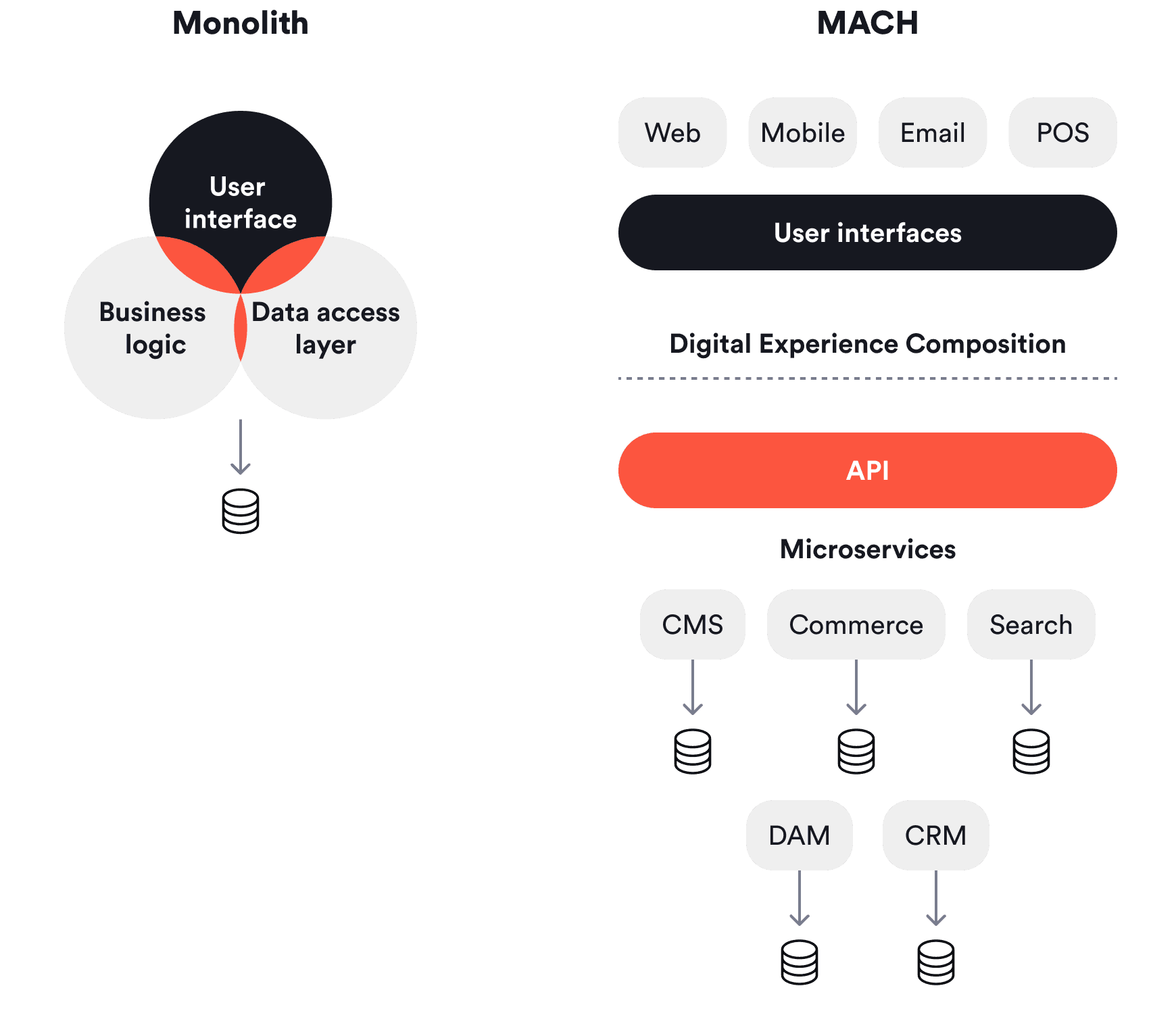
The benefits of a Headless CMS
To better understand the benefits of a headless CMS, it's essential to understand the platforms currently dominating the traditional or monolithic CMS market and some of their inherent limitations. Examples of these platforms include WordPress, Drupal, Adobe Experience Manager and Sitecore.
While most of these platforms have now introduced a headless option, they still primarily operate as traditional monoliths and face some of the challenges of this approach. The benefit of these systems is that they are well established, have been around for many years, and therefore offer a wide range of plugins and integrations. However, they are limited in their ability to serve content to multiple digital products or assets, given that content management, presentation and business logic layers are tightly coupled.
One of the key issues with traditional or monolithic CMS is that page structure and layout is merged with content, which can lead to performance issues and the inability to reuse content for multiple needs. In addition, development requires knowledge of the chosen CMS coding language, which can limit flexibility and make finding skilled developers to support your digital assets more challenging. Finally, integrating other services, such as forms, search, payments, and analytics, can also be more challenging with a traditional CMS.
In contrast, a headless CMS provides several key benefits, including:
- Content reuse
Content can be created once and served to multiple digital products or assets. This approach saves time, simplifies content maintenance, and supports the varying presentation of content depending on the device using it. - Design and development flexibility
The separation of the front-end and back-end provides increased flexibility for both design and development. Designers have the freedom to create optimal user experiences without constraints, while developers can choose the tools they prefer to build the front-end experience. - Microservices integration
Adopting a headless approach enables the utilisation of best-of-breed microservices to achieve the desired functionality. You are not limited to the services provided by the CMS platform and can leverage specialised services for specific needs via APIs - Delivery efficiency
Due to the separation of the front-end and back-end, team members can work simultaneously on their respective deliverables, resulting in faster project completion.
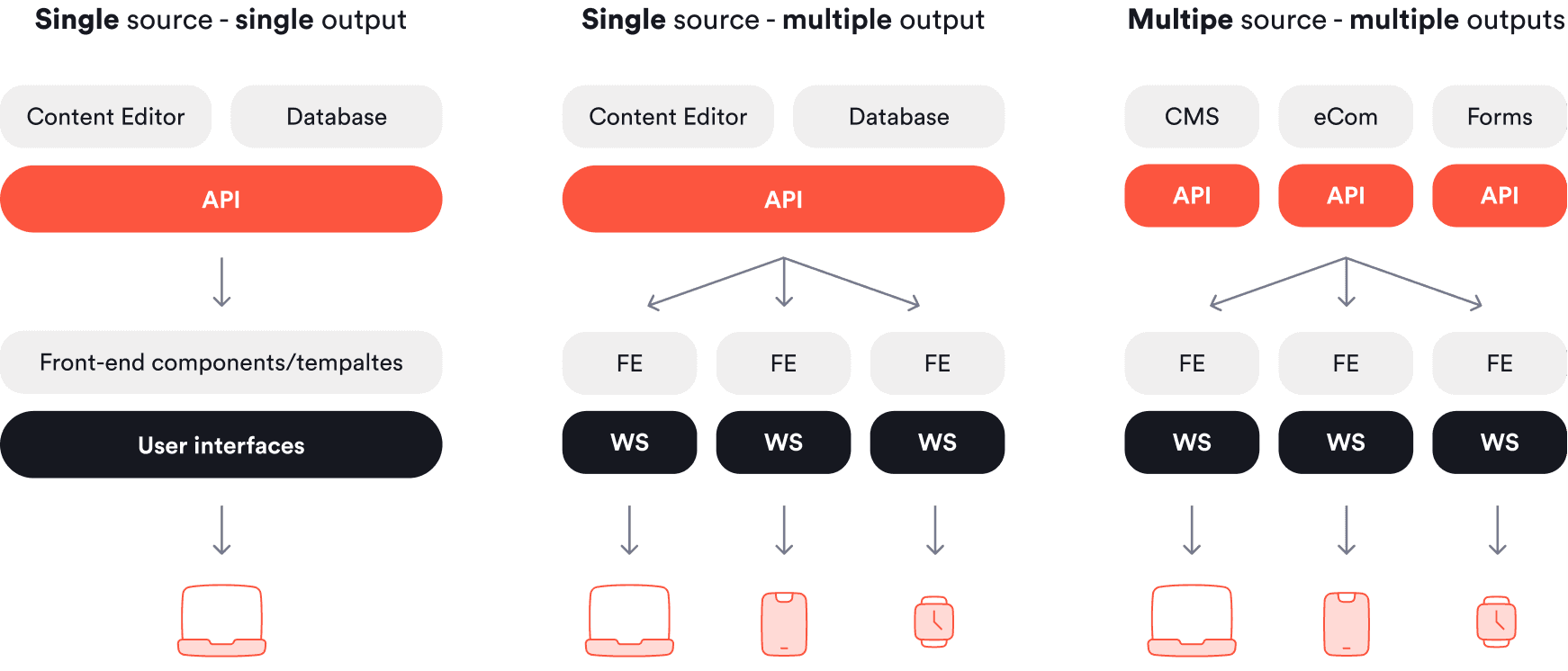
To summarise the benefits, a recent study by StoryBlok found that 84% of Australian respondents saw improvements in terms of time-saving, budget, productivity, increased revenues and meeting KPIs since switching to a headless CMS.
Who's using a Headless CMS?
Some examples of large brands that have shifted to a headless CMS architecture include Adidas, Airbnb, and the New York Times. Locally, brands such as JBHiFi, Atlassian, Kmart, Oatly, Officeworks and Scentre Group (Westfield) have realised the benefits of headless CMS and have seen improvements in site performance, content delivery, and flexibility.
Atlassian uses a headless CMS to store, edit, and publish content for a growing list of external support services: help and technical documentation, FAQs, help articles, product documentation, in-product support, and resources for people considering buying Atlassian products. How has this impacted speed to market? By implementing a Headless CMS, Atlassian has reduced its content publishing time from 2 weeks to 5 minutes.
Read the Atlassian case study here.
By implementing a Headless CMS, these brands can deliver a more personalised and consistent experience across all customer touchpoints. They can also reduce development time and costs by reusing content across multiple platforms and integrating with third-party systems.
As technology continues to evolve, the future of headless CMS looks bright. Headless CMS is a promising solution for content management that is gaining more popularity. In Australia, headless adoption is on the rise, with a recent survey by tech research firm Gartner showing that 30% of companies in the country are already using or planning to adopt headless CMS.
Key considerations before switching to a Headless CMS
Headless CMS may not be suitable for every organisation or project. If you have a single digital asset that requires a lot of content editing or a small team that is not familiar with this style of development, then headless CMS may not be the best option. A traditional CMS may also be better if your project requires a tightly integrated content and design workflow.
Here are some key considerations to consider before switching:
- The complexity of development
Since headless CMS separates back-end and front-end code, developers must be sufficiently skilled in both areas. Additionally, since a headless CMS has more moving parts than a traditional CMS, it can be more challenging to maintain. - Content management
With a headless CMS, you may not benefit from a WYSIWYG (What You See Is What You Get) editor, as content styling is controlled on the front-end. This means that you will need to work closely with your developers to ensure that content is formatted correctly and displayed in the desired way. - Content structure
Headless CMS requires structured content - the data needs to be broken down into specific fields, such as product name, price, and description. Traditional CMS, on the other hand, often allows for unstructured content such as freeform text. - Change management
Switching to a headless CMS also requires changes in managing and publishing your content. Your team will need to adjust to a new way of working, which may require additional training and support.
When using a headless CMS, there are best practices that can help you get the most out of the platform. Best practices include:
- Designing a robust content model.
- Developing a consistent naming convention.
- Creating reusable components.
By following these best practices, you can ensure your content is well-organised and easy to manage.
Comparison: Headless vs Traditional CMS
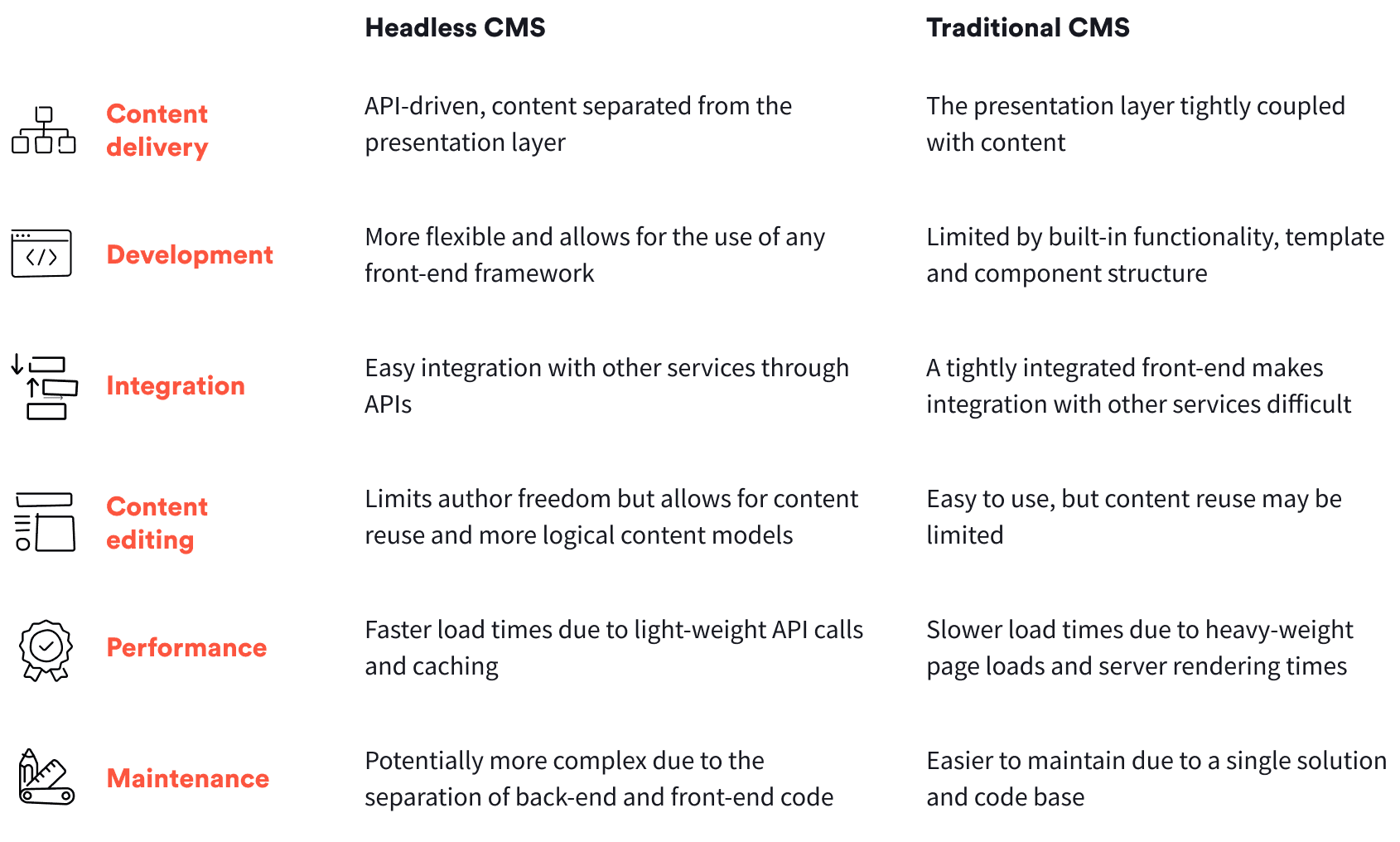
What are some of the leading Headless CMS platforms?
There are now a huge number of CMS platforms, and the key is finding a solution that best meets your business's individual needs and internal workflows. Here are some examples of headless CMS platforms we like to work with:
Each platform has its strengths and weaknesses, so it's essential to evaluate each carefully to determine the best fit for your organisation.
How Inlight can help
At Inlight, we have extensive experience helping organisations transition to a headless CMS architecture. Our team of experts understand the benefits and challenges of this approach and can guide you through the entire process. We have successfully implemented headless CMS for leading brands, including ahm, Nandos, Vicinity Centres, TAC, and this website you're on now!
View our case studies here.
If you're considering a shift to headless, we can help you with a current state review and make recommendations based on your specific business needs. Our team can also assist with change management and introducing new processes to ensure a smooth transition to a headless CMS model.
If you're interested in learning more about how a headless CMS could transform your approach to digital, please reach out to us for a chat. We'd be happy to discuss your needs and provide a tailored solution to help you achieve your digital goals.

